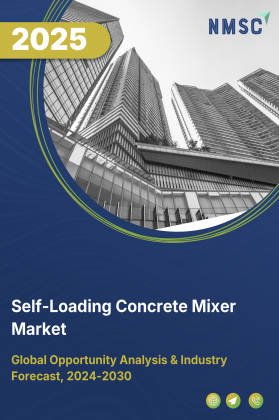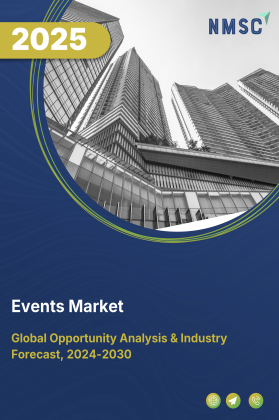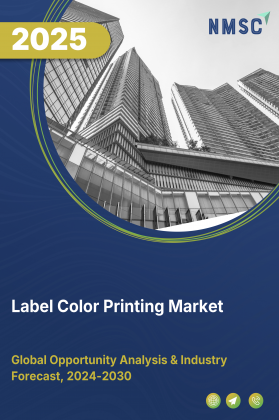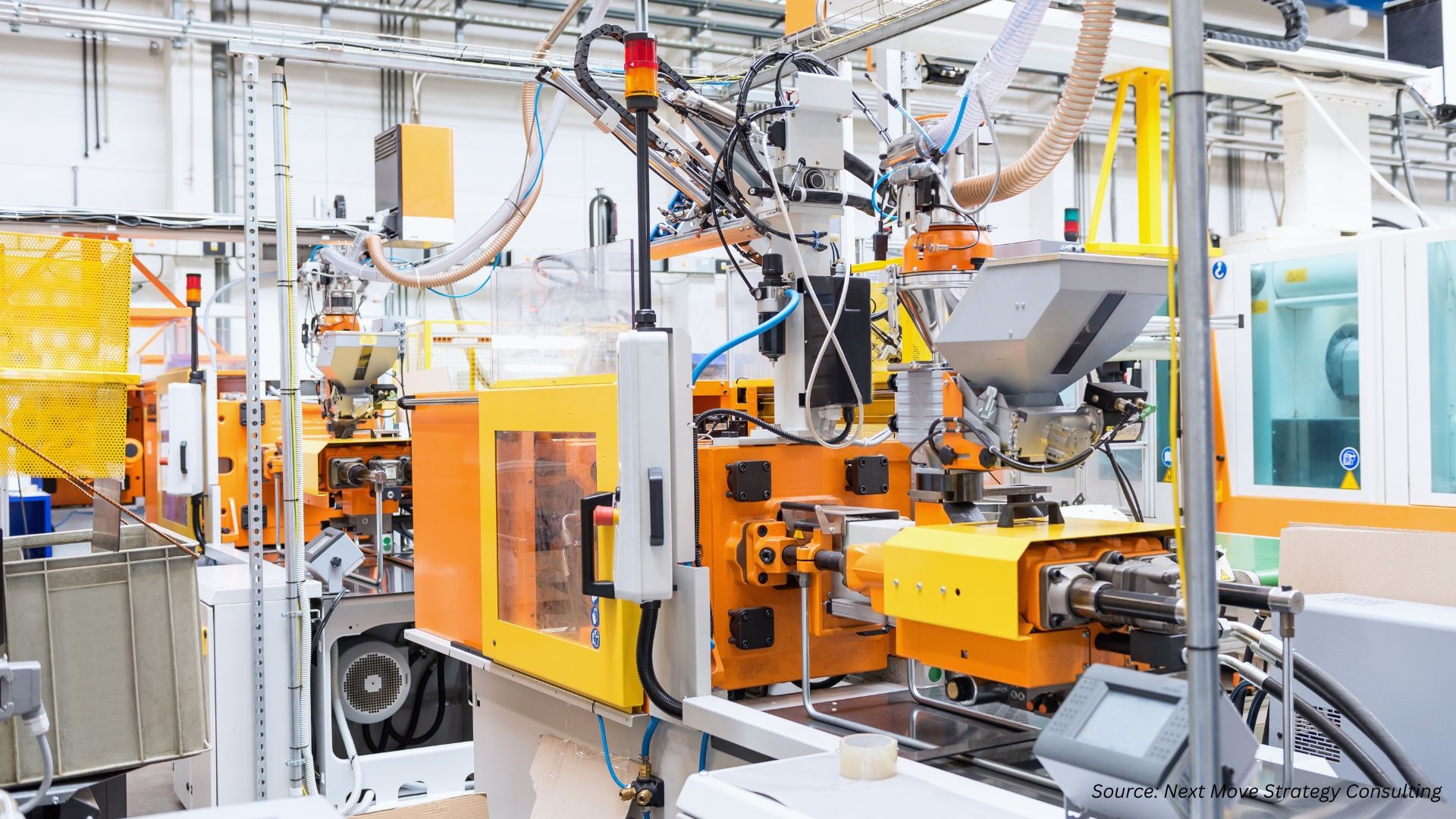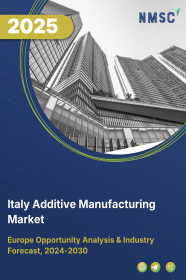
Italy Additive Manufacturing Market by Offering (Printers, Materials, Software, and Services), by Technology (Fused Deposition Modelling (FDM), Stereolithography (SLA), and Other Technologies), by Process (Powder Bed Fusion (PBF), Vat Photopolymerization, and Other Processes), by Application (Prototyping, Tooling, and Functional Part Manufacturing), by Vertical (Automotive, Aerospace & Defense, Healthcare, and Other Verticals) – Opportunity Analysis and Industry Forecast, 2024–2030.
Industry: Construction & Manufacturing | Publish Date: 22-Aug-2025 | No of Pages: 216 | No. of Tables: 138 | No. of Figures: 83 | Format: PDF | Report Code : CM654
Italy Additive Manufacturing Market Overview
Italy Additive Manufacturing Market size was valued at USD 626.5 million in 2023, and is predicted to reach USD 1931.3 million by 2030, at a CAGR of 16.0% from 2024 to 2030. In terms of volume, the market size was 35 thousand units in 2023, and is projected to reach 130 thousand units by 2030, with a CAGR of 17.4% from 2024 to 2030.
The additive manufacturing (AM) market, also known as additive layer manufacturing (ALM) or three-dimensional (3D) printing, represents a global industry focused on developing, manufacturing, and distributing technologies and materials used to create three-dimensional objects layer by layer from digital models.
This market caters to diverse sectors such as aerospace, automotive, healthcare, and consumer goods, offering advanced solutions for prototyping, production, and custom manufacturing.
AM is renowned for its ability to produce highly intricate and personalized components while minimizing material waste, leading to significant cost savings and environmental benefits. One notable characteristic of this market is its variety of printing technologies, including stereolithography (SLA), selective laser sintering (SLS), and fused deposition modeling (FDM), each designed to meet specific industry needs and applications. Furthermore, AM's capability for rapid prototyping accelerates product development cycles, empowering businesses to innovate and bring products to market faster compared to traditional manufacturing methods.
Government Incentives Accelerating AM Adoption Across Industries
Italy’s national “Transizione 4.0” initiative is playing a pivotal role in accelerating the adoption of additive manufacturing across various industrial sectors. This program provides comprehensive support for companies investing in digital transformation, including tax credits for the purchase of advanced equipment, software integration, and workforce upskilling. As a result, AM is becoming increasingly accessible to both large manufacturers and small to mid-sized enterprises, enabling wider deployment across automotive, aerospace, healthcare, and industrial machinery sectors. The policy is designed not only to modernize Italy’s manufacturing base but also to position it as a leader in sustainable and high-value production. With ongoing government commitment and extended timelines for the incentives, the program continues to foster innovation and reduce financial barriers to entry for AM technologies.
Advanced AI Integration Enhancing Quality, Speed, and Sustainability
The integration of artificial intelligence into additive manufacturing workflows is rapidly transforming Italy’s production landscape. Italian manufacturers are leveraging AI tools to improve process control, monitor production in real time, and predict equipment maintenance needs, all of which enhance overall efficiency and product quality. In sectors such as aerospace and medical devices, AI-powered AM systems are enabling the creation of complex, high-precision components with minimal waste and faster turnaround times. This integration is also supporting environmental goals by optimizing energy use and reducing raw material consumption. The combination of AM’s design flexibility with AI’s data-driven capabilities is fostering smarter, more sustainable manufacturing practices, marking a significant shift from traditional prototyping toward scalable, intelligent production systems across Italy.
Limited Standardization and Certification Frameworks Hinder Industrial Scale-up
A major restraint in Italy’s additive manufacturing market is the absence of clear certification and quality standards for end-use parts, especially in regulated sectors like aerospace, automotive, and healthcare. This regulatory gap creates uncertainty around product validation and slows the adoption of AM for serial production. Without standardized guidelines for testing, materials, and traceability, many firms—particularly SMEs—are hesitant to scale AM operations. While efforts are underway to address this, the current lack of harmonized frameworks continues to limit broader industrial integration
Innovation in Am Materials Enabling Scalable High-Performance Manufacturing
Italy’s additive manufacturing market is positioned to benefit from accelerated innovation in advanced materials, particularly in metal alloys, bio-compatible polymers, and high-performance composites. As end-users in aerospace, automotive, energy, and medical sectors demand components with enhanced strength, heat resistance, and corrosion protection, the development of next-generation AM materials is unlocking new design and performance capabilities that traditional manufacturing cannot achieve.
Ongoing collaborations between Italian universities, research centers, and private manufacturers are fueling breakthroughs in material science tailored specifically for AM processes. These include lightweight titanium-aluminum alloys for aerospace structures, wear-resistant stainless steels for automotive tooling, and biodegradable polymers for medical implants. Such advancements are enabling the shift from prototyping to full-scale, production-grade parts capable of meeting stringent regulatory and functional requirements.
With strong national expertise in metallurgy and materials engineering, Italy is well-positioned to become a leader in the formulation and industrial application of AM-specific materials. As material portfolios continue to diversify and mature, the Italian AM market is expected to move further into high-value production, offering customized, durable, and sustainable solutions across multiple critical industries.
Competitive Landscape
The prominent key players operating in Italy additive manufacturing industry include Stratasys Ltd., Materialise NV, DWS (Digital Wax Systems), HP Inc., 3D Systems, Inc., Roboze, 3D4MEC S.r.l, WASP, SLM Solutions Group AG, Renishaw plc, EOS GmbH, Formlabs, Prima Additive, 3ntr, Trumpf and others.
Italy Additive Manufacturing Market Key Segments
By Offering
-
Printers
-
Desktop Printers
-
Industrial Printers
-
-
Materials
-
Plastics
-
Thermoplastics
-
Photopolymers
-
-
Metals
-
Steel
-
Aluminum
-
Titanium
-
Nickel
-
Other metals
-
-
Ceramics
-
Other Materials
-
Wax
-
Laywood
-
Paper
-
Biocompatible materials
-
-
-
Software
-
Design
-
Inspection
-
Printing
-
Scanning
-
-
Services
By Technology
-
Fused Deposition Modelling (FDM)
-
Stereolithography (SLA)
-
Selective Laser Sintering (SLS)
-
Polyjet Printing/Multijet Printing (MJP)
-
Electron Beam Melting (EBM)
-
Digital Light Processing (DLP)
-
Direct Metal Laser Sintering (DMLS)
-
Other Technologies
By Process
-
Powder Bed Fusion (PBF)
-
Vat Photopolymerization
-
Binder Jetting
-
Material Extrusion
-
Material Jetting
-
Other Processes
By Application
-
Prototyping
-
Tooling
-
Functional Part Manufacturing
By Vertical
-
Automotive
-
Aerospace & Defense
-
Healthcare
-
Architecture & Construction
-
Education
-
Industrial
-
Energy
-
Printed Electronics
-
Jewelry
-
Food & Culinary
-
Other Verticals
Key Players
-
Stratasys Ltd.
-
Materialise NV
-
DWS (Digital Wax Systems)
-
HP Inc.
-
3D Systems, Inc.
-
Roboze
-
3D4MEC S.r.l
-
WASP
-
SLM Solutions Group AG
-
Renishaw plc
-
EOS GmbH
-
Formlabs
-
Prima Additive
-
3ntr
-
Trumpf
REPORT SCOPE AND SEGMENTATION:
|
Parameters |
Details |
|
Market Size Value in 2023 |
USD 626.5 million |
|
Revenue Forecast in 2030 |
USD 1931.3 million |
|
Growth Rate |
CAGR 16.0% from 2024 to 2030 |
|
Market Volume in 2023 |
35 thousand units |
|
Market Forecast in 2030 |
130 thousand units |
|
Volume Growth Rate |
CAGR of 18.7% from 2024 to 2030 |
|
Analysis Period |
2023–2030 |
|
Base Year Considered |
2023 |
|
Forecast Period |
2024–2030 |
|
Market Size Estimation |
Million (USD) |
|
Growth Factors |
|
|
Companies Profiled |
15 |
|
Market Share |
Available for 10 companies |
|
Customization Scope |
Free customization (equivalent up to 80 working hours of analysts) after purchase. Addition or alteration to country, regional, and segment scope. |
|
Pricing and Purchase Options |
Avail customized purchase options to meet your exact research needs. |

















 Speak to Our Analyst
Speak to Our Analyst



